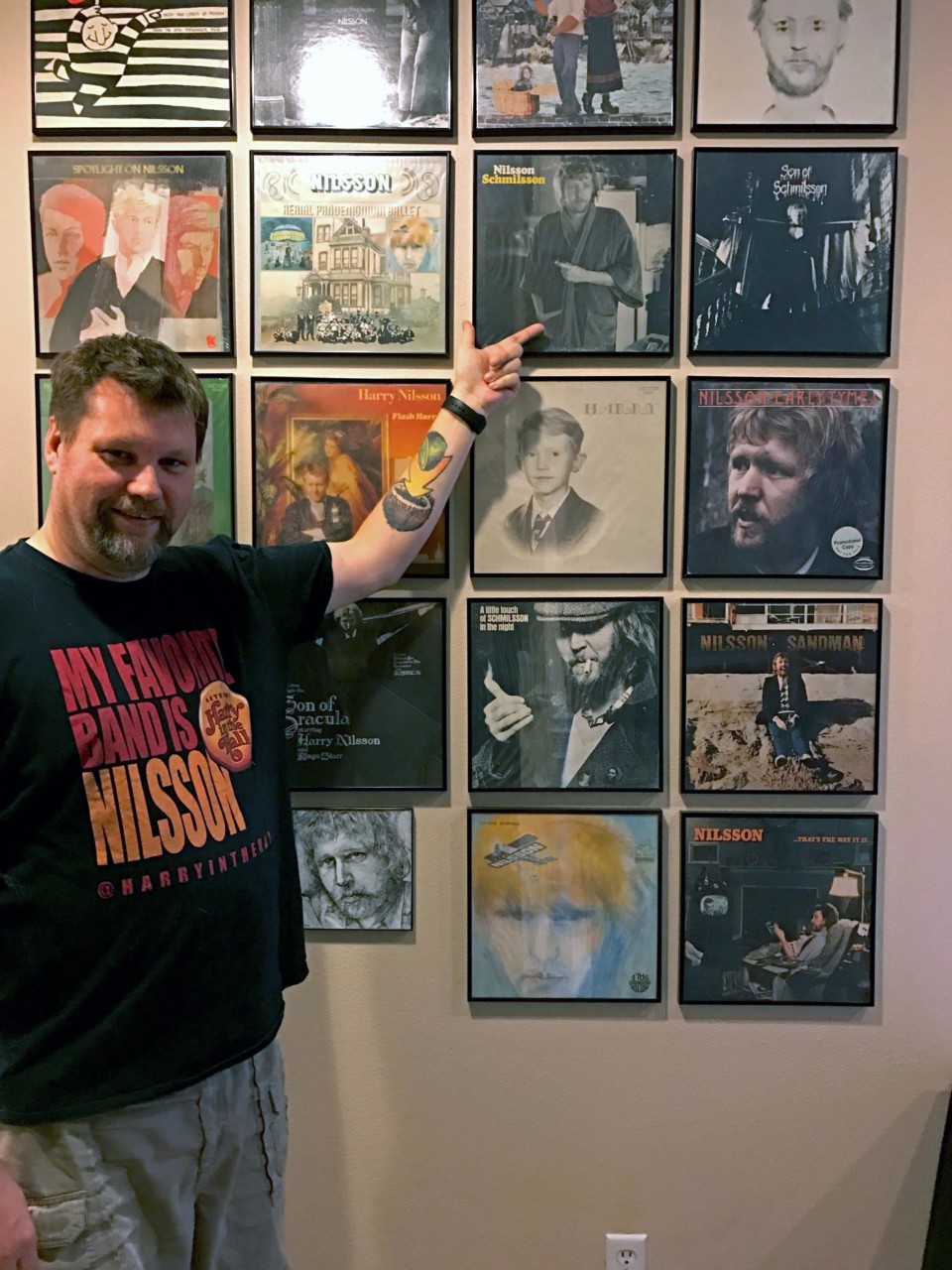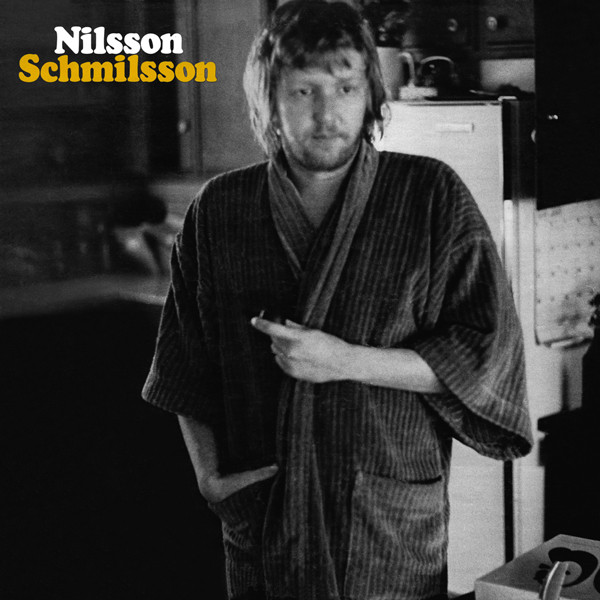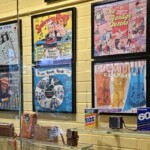
In late-1971, Harry Nilsson tasted his greatest success. Within a year, many thought he had thrown it back up.
Nilsson Schmilsson is my all-time favorite album. It’s a tight, catchy, ten-song collective balled up into 35 minutes of Harry in all permutations – he’s up, down, high, low, tender, rocking and everything in between. I can’t think of another album that contains a song (“Jump in the Fire”) so catchy it would be destined for cinema screens (remember the “May 11, 1980” sequence in GoodFellas?) and LCD Soundsystem’s Madison Square Garden “final” concert set-list.
In giving his everything, Nilsson was rewarded splendidly. By 1972, he would secure his only number one hit with a cover of Badfinger’s “Without You,” plus another top 10 hit with the one-chord novelty smash, “Coconut.”
““Coconut” is a weird one – one of those songs that was truly, uniquely Harry,” recalled Nilsson’s first son, Zak, to Elmore recently. “Harry told me that he wrote the first half of (“Coconut”) while he was sitting on a beach in Hawaii, and the second half while stuck in traffic in L.A., which, I guess, makes as much sense as anything else when you consider the content of the song.”
Not long after hitting the apex of the charts (Nilsson Schmilsson would peak at number three), Harry’s musical middle fingers seemingly came out in full force. Nilsson’s next effort for RCA would be Son of Schmilsson, a work many felt was Nilsson’s telephone book album given that what’s on it sounds like he’s just phoning it in.
Containing lyrics like “I’d rather be dead, then wet my bed,” and “You’re breaking my heart, you’re tearing it apart, so fuck you,” Nilsson’s fans quickly pounced on the supposed lackluster qualities of the album. I, meanwhile, remain wild about Harry, because he defied industry convention. Simply put, he never made the same album twice. In the case of Son of Schmilsson, it’s as if he intentionally regressed his artistry to better gauge who his real fans were.
With 2017 marking the 35th anniversary of Son of Schmilsson, I’m getting an early jump on the celebration – I invited Zak Nilsson to provide commentary about both albums and determine where they fit within Harry’s legacy. For the die-hard Nilsson fanatics out there, Zak is the baby featured with Harry in a Son of Schmilsson inner sleeve photo.
“If you ask me, I think Son of Schmilsson is Nilsson Schmilsson’s equal in many ways. It has the same amazing Richard Perry production, the same crew of insanely good musicians, and Harry had really hit a stride with his writing,” Zak told me. “It didn’t have the ‘big hit’ like Nilsson Schmilsson did, but it did have songs on it that I think were better than a lot of songs on his previous album.”
The album kicks off with the ballsy “Take 54,” as Harry laments about singing his “balls off” to impress a woman, all to no avail. It’s more of a sloppy number compared to tracks like “Gotta Get Up” and “Driving Along” from Nilsson Schmilsson. However, as Zak describes, things are only warming up as Harry prepares to wow with other Son of Schmilsson “heartbreakers” like “Remember (Christmas)” and “Turn On Your Radio.”
 “I’d be lying if I said I didn’t tear up almost every time I hear these,” he said. ““Turn on Your Radio” took on the quality of a sledgehammer after Harry died in 1994. For years after that I couldn’t listen to that song without crying. Now, almost 25 years later, I’ve been able to hold it down to just a little wetness and redness in the eyes. You know, nothing crazy.”
“I’d be lying if I said I didn’t tear up almost every time I hear these,” he said. ““Turn on Your Radio” took on the quality of a sledgehammer after Harry died in 1994. For years after that I couldn’t listen to that song without crying. Now, almost 25 years later, I’ve been able to hold it down to just a little wetness and redness in the eyes. You know, nothing crazy.”
Zak also added this prophetic statement about the tune: “It always sounded to me like he was writing about his own death. And then when he died… it wasn’t any comfort at all. Like anyone who loses a loved one, I was distraught and depressed for a long time. But then one day I listened to the song again, and I was able to take comfort in hearing his voice. It’s always been one of my favorite songs of his.”
I certainly feel Son of Schmilsson has some definite standouts. “Spaceman,” the album’s biggest hit (number 23) boasts great vocals and strong orchestral instrumentation. Harry’s use of lyrical visuals is also unsurpassed: “Bang, bang, shoot ‘em up, destiny. Bang, bang, shoot ‘em up, to the moon!” “At My Front Door” picks up from where “Let the Good Times Roll” left off on Nilsson Schmilsson. If you erase the profanity from “You’re Breakin’ My Heart,” it could arguably have made all the difference.
Zak doesn’t necessarily agree.
“Everybody knows that one. Raunchy, raucous rock ‘n’ roll. Harry didn’t do a lot of rock songs, but I think the ones he did were really good,” he told me. “This album had more rock than most, and I wonder if maybe people were expecting another album of “Without Yous” when this came out, only to hear Harry yelling about somebody ‘stepping on his ass’ and ‘breaking his glasses.’”
And then there’s an obvious fact – which I admit overlooking in my repeat listening of Son of Schmilsson. “I’d Rather Be Dead” is the album’s novelty song, just like “Coconut” was on Nilsson Schmilsson. Instead of lyrics being “You put the lime in da coconut and drink ‘em both together,” it became “I’ll tie my tie ‘till the day I die.” It’s not Harry trying to alienate anyone; it’s him being naturally funny.
“As a kid growing up, I thought this song was just hilarious,” Zak said, “That was Harry for you.”
Where Harry ends on a serious note on Nilsson Schmilsson with the plaintive “I’ll Never Leave You,” he keeps the humor around for Son of Schmilsson’s closer, “The Most Beautiful World in the World.” I wonder now if it’s a dig at country icon Charlie Rich, even though the song is essentially a reggae tune featuring Harry’s own gargling as musical accompaniment.
“All I know is that Harry was tremendously funny,” Zak said. “When I go back and listen to songs like this, it reminds me of when he used to tell me really silly jokes and make me expire from laughing.”
Both albums would be Harry’s only works to go gold stateside, despite their differing musical approaches. Over the next decade, Harry would dive into the Great American Songbook, Lost Weekend tunes with John Lennon, debauched numbers and soundtrack work before devoting himself wholly to his family until his tragic death at age 53.
Like his father, Zak, a part-time musician, is carrying on the Harry brand of humor.
“(Harry) was like a dirty prodigy, shambling into the studio to create complete perfection,” he said. “Jealousy isn’t pretty, but how could I not be a little envious, and pissed that I didn’t get any of those sweet vocal genes. I mean, come on!”
I certainly can’t answer that, but even Harry, while alive, knew perfection was impossible to achieve. “Jump into the Fire” says it better than anything: “You can climb a mountain. You can swim the sea. You can jump into the fire, but you’ll never be free!”
If they’re not the embodiment of perfection though, then Nilsson Schmilsson and its progeny are undoubtedly as good as it gets.
-Ira Kantor
Dig the column? Reach out to Ira via email at ikantor84@gmail.com or on Twitter at @ira_kantor







[…] his greatest success. Within a year, many thought he had thrown it back up. Nilsson Schmilsson is my all-time favorite album. It’s a tight, catchy, ten-song collective balled up into 35 minutes of Harry in all permutations […]
Excellent!